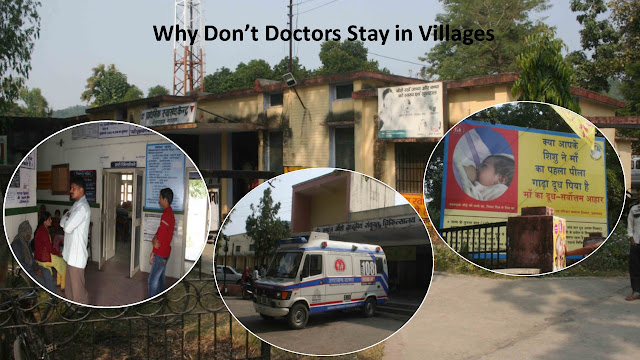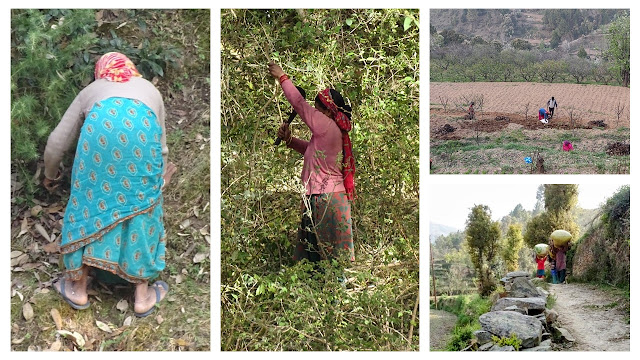Who will Shine the Light ?
 |
The Covid situation in India is exploding and probably all of us have friends or family who have not only had the infection but have lost their lives to this virus. The foreign media are reporting failures in management and many countries have stopped any travellers coming from India. A new set of social media posts have started coming from people who are partial to the government in power which build the ‘Indian’ situation as being not as hopeless as being made out. The case fatality or ratio of people is still far lower than what the more advanced countries in Europe went through. One particularly bold post went forward to claim that India was probably the safest country to be in.
Other posts claim that this is not the time to be anti-Government
because the government is trying the best that it can. It is time to support
the government and not criticise it. And is there an alternative to Mr Modi?
The moot question is not who is anti-Modi and who is pro-India.
The larger question is there a problem and if there can be a better solution? We
who spend a lot of time debating politics and policies on social media are
probably not in positions where we can deliver those solutions but right now
the Covid problem dogs our lives and we should engage with it.
The way I see it the discussion is often about these three
questions:
Q1. Does the International comparison of death rates,
fatality rates etc. provide us a clue to the situation on the ground and does
it provide clues to the future?
Q2. Are the ‘solutions’ being proposed cognisant of the
situation of the ground and the available science and knowledge that we have
with us and anticipating the possible future scenarios?
Q3 Does critiquing the establishment approach denote a
desire to pull down India?
Data from one kind of source can be misleading for a country
like India. It has multiple realities. If we look at global country level
comparisons India still looks to be doing well. The total number of cases and
deaths seem high, but we are a very large country so if we go to the level of population
level rates the data seems acceptable and indeed commendable. The more advanced
countries in Western Europe do not seem to have done much better. ( See Figure
1 below ). While India is second only to the US on the number of total cases the fatality rates seem to be so much lower. We are right at the bottom of the list of nations on the figure below.
Now if you look at the news reports of the situation on the ground eg. if you look into this news article from a very reputed daily newspaper today you will note that in a particular place in Unnao district in UP the number of dead bodies being disposed has increased tremendously in recent times and people are not reporting ‘Covid’ as a cause of death. (https://www.thehindu.com/news/national/other-states/amid-rising-deaths-poor-in-unnao-struggle-with-funerals/article34567744.ece ). It points to the fact that there is possibly an increase in deaths happening in the area and it probably not being reported as ‘Covid’ in data systems. What do we derive from this information? Could the India data on JHU dashboard be an ‘inaccurate’ representation of reality? How should we hedge our bets? What do we see around us? What are the signs related to scale of death and disease around us?
Do we need complacence through comparisons or is there a
need for urgent action?
At this point the most important solutions seem to be
vaccination, movement restrictions, barrier methods like masking and
distancing. We all have our opinions on these, since all our lives are affected
by these. But the larger question is whether these are they working optimally?
Are they appropriate for all people in all places? If not, why not? Many of us are economically
secure and the ‘Work from Home’ while bringing many constraints is not really a
deal-breaker for us. But is it the same for all? It is true that many are not
wearing masks and defying these restrictions. But is that the only reality of
people’s lives across this vast and varied reality of India?
Who are making the decisions that affect the billion plus lives in India? Can any single authority even attempt to do so? Is there a consensus, in the approaches that are being adopted? Is consensus building happening? Are people making common cause to deal with a common threat? Are we looking around for other solutions which could have more traction or compliance? Why is the situation in Karnataka so different from Kerala? Why does Karnataka have three and half times more deaths even though Kerala had the same number of people infected with a population about half of that of Karnataka? ( See the comparison in the Figure below - from https://www.covid19india.org/). Why are people in Goa which is a tiny state suffering where neighbouring Maharashtra which much larger, seems to have turned the corner? What are the lessons from the Brihanmumbai Municipal management strategies that could be useful elsewhere? Is there anything that can be learnt from story of a tribal district that can be useful in other places? Are we really learning lessons from within the country?
It is really heartening to see the multiple decentralised
efforts to provide support to those who need a hospital bed, a cylinder of
oxygen, medicines which are unavailable on the pharmacy shelves. Individual
citizens are joining such efforts, raising funds, delivering food, reaching out
to friends and family to provide help and this is the true character of a
vibrant society.
But a vibrant society also needs to engage with the larger
processes which we all invest in for ‘governance’ and if the governance systems
right now seem to be inadequate to the task, as responsible citizens it is our
duty to shine the light.
Stay safe and keep shining the light !






Current central government couldn't want to understand the people voice and ground reality's. Real data's are not coming in front of peoples.
ReplyDeleteMany time data misinterpreted and decision maker don't want to se the reality. They are more boury about maintaining their emage.
ReplyDeleteThanks. Very thoughtful blog. Also using multiple data sources to highlight what the real issues could be is very helpful. I am sharing it.
ReplyDeleteI am not in agreement with the logic or tone. It smacks of Indian exceptionalism and Covid nationalism. Our own press is reporting the size of the crisis. There are bodies in our waters. The foreign press doesnt have to tell us that people are dying without access to oxygen. Also this constant comparison between the US and India about infection rates and death rates is pure occidentalism. Yes there is a lot to learn from Indian states which have performed well and are still managing to turn the corner. Each of these instances are also about wise governance and not just about data, often local. Otherwise you wouldnt see the results as in Dharavi in Mumbai. Here the Commisioner for Health set up a very early relationship with resident associations with the result that infections have come down drastically. All I am trying stress is that whereever the state of the pandemic has not been hidden, suppressed by political intimidation and people taken into account as if they matter, the pandemic seems to be manageable!
ReplyDelete